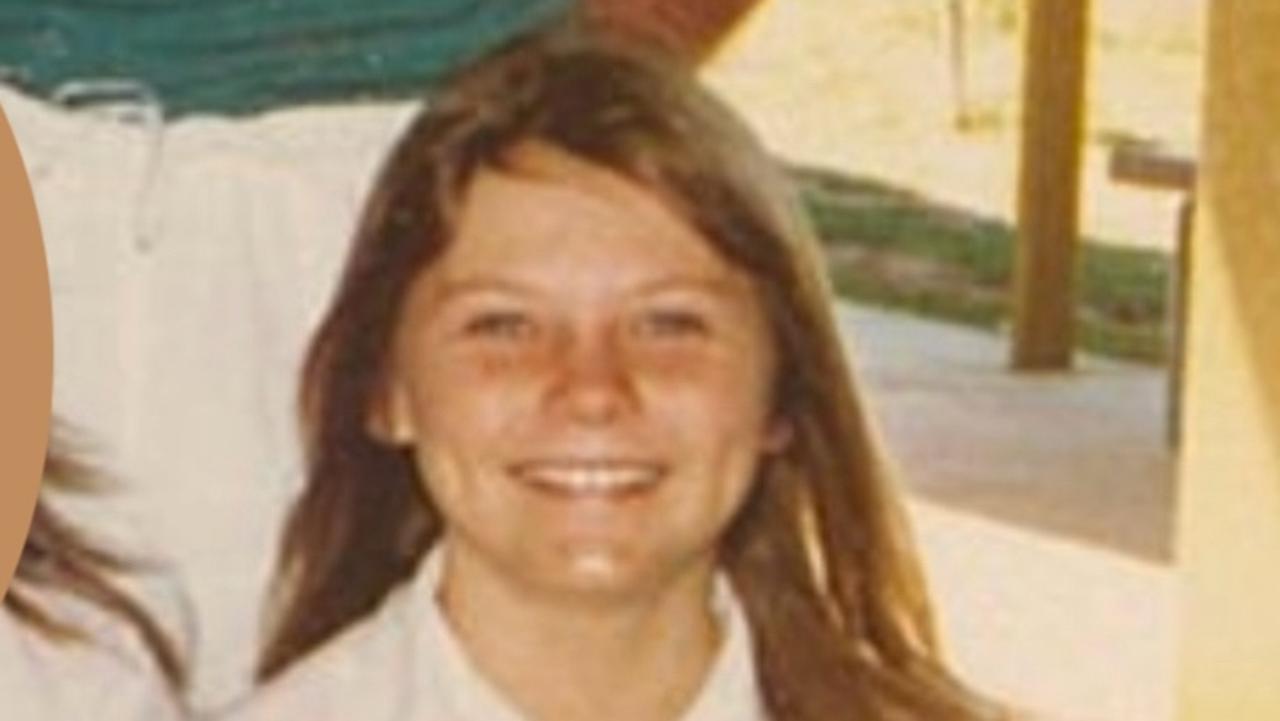Beef giant TRT Pastoral moves into dairy
Telco entrepreneur-turned-cattle baron Tim Roberts-Thomson has added an iconic Tasmanian dairy farm to his $500m Angus empire.
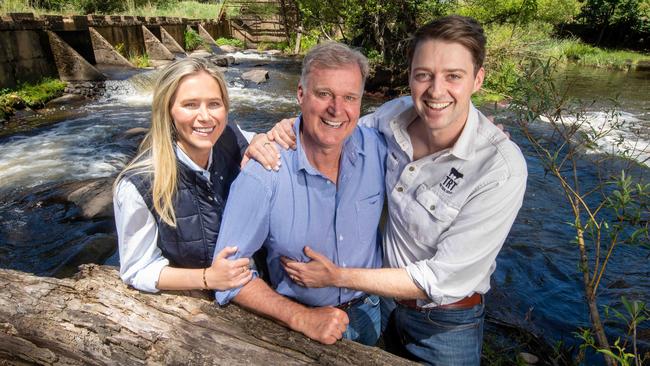
The surf is running and the summer sun shining on the white beaches of King Island’s rugged west coast, making the remote Bass Strait island look like more like a tourism advertisement for Queensland than chilly Tasmania.
But in the elegant family beach house on the sand dunes above Phoques Bay, an unseasonably dry spell on normally lush King Island has telco entrepreneur-turned-cattle baron Tim Roberts-Thomson longing for rain.
With 10 beef cattle properties covering 9500 hectares of the small island – almost one-sixth of its sought-after prime farmland – and running 25,000 black Angus cattle, constant pasture growth is key to both profitability and the farms’ strict high-intensity rotational grazing plan.
Roberts-Thomson is not too worried. Fortunately, many of the 4000 heavy grass-fed steers he produces every year are almost ready to be shipped from King Island across Bass Strait to the little Victorian fishing village of Port Welshpool.
Northern NSW feedlotters with well-known prestige meat brands have already been on the phone, queuing to snap up his quality grass-fed Angus cattle – renowned for their quiet temperament – to truck north once they arrive in Victoria.

And cattle prices are finally on the rise again, bringing a smile to Robert-Thomson’s face after a horror previous year.
“There’s not many industries that could take a 60 per cent price hit in six months and stay viable,” reflects Roberts-Thomson, now one of the biggest cattle owners in southern Australia.
“I’m not sure what that says about the cattle industry – maybe just that the past few good seasons and high prices before the crash have reduced debt and provided a buffer now – but it’s certainly good to see.”
Roberts-Thomson also believes that even a briefly dry King Island is a better place to farm than most of the rest of Australia, with its reliable rainfall, good soils and moderate maritime climate.
After owning vast cattle station Numery near Alice Springs for six years in the early 2000s and 33,000-hectare $60 million Murrumbidgee River station Juanbung near Balranald until 2019, he learned the hard way that in inland Australia, good seasons were too often few and far between.
He had also had his fill of tropical Brahman-cross cattle and even his high-country Herefords.
“As I focussed more and more on agriculture and our size got larger, I realised I had to have reliable high-rainfall country and black Angus cattle,” Roberts-Thomson says. “Then King Island came on to the market.”
It was the $45 million high-profile purchase of the prized beef cattle farming assets of the Sustainable Agriculture Fund on King Island in December 2017, that really catapulted the Roberts-Thomson name into the national agribusiness spotlight.
For 25 years, the family had slowly been buying up seven smaller farms around Mansfield in North East Victoria including revered Howquadale Station, as well as Numery and Juanbung, while the family lived and worked in Melbourne.
But the surprise knockout-bid by Roberts-Thomson for SAF’s five King Island properties and its herd of 5500 top-notch Angus breeding cows and excellent infrastructure beat several international bidders and local families to the prize, and signalled his arrival as Australia’s newest cattle king.

The company now owns 21 properties spread across three farming aggregations in North East Victoria, King Island and northwest Tasmania and runs more than 35,000 cattle on a combined 19,000 hectares of grazing land.
Roberts-Thomson has achieved the scale he had previously only dreamed of, with TRT Pastoral Group believed to now run the largest family-owned herd of Angus cattle in Australia, and land and cattle assets valued at more than $500 million.
“I try to fly under the radar,” says the self-made businessman, who originally made his money from a small company he founded and owned with his older brother Barry, that brought the Orange and 3 mobile phone networks to Australia. (Tim and Barry still retain some ownership of the resulting giant, Hutchinson Telecommunications Australia, today.)
“I’ve always just had a passion for ag. So, even when I was doing other things (first, in telecoms then owning the Mermaid Property Services and commercial cleaning business), we gradually expanded (our farms) as we were able to.
“But I was particularly rapt when I got (SAF’s King Island farms). It was – and still is – an incredible purchase, and it was perfect timing for us in our expansion.”
Since then, Roberts-Thomson has bought another five properties on King Island, becoming its biggest single landholder, owning 16 per cent of all grazing land.
It has earned him the ire of some of the 1600 locals, although he emphasises TRT Pastoral is very much a large family business and not a faceless corporate player or overseas pension fund.
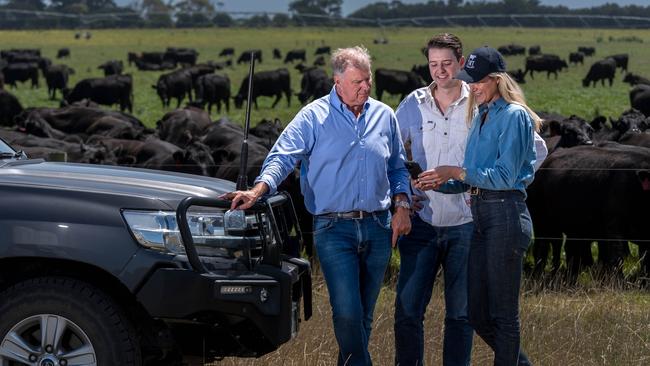
But with KI land values having jumped from $5000 a hectare ($2000/acre) in 2017 when TRT Pastoral first bought into the island, to $25,000/ha today as Roberts-Thomson has expanded his holdings – and other Queensland and NSW producers and wealthy corporate entities have followed in his footsteps – many young locals have now been priced out of owning their own farms.
It’s an issue the Roberts-Thomson family is acutely conscious of. “The island is a very special place, and now for our family too,” he says.
“We’ve come to know a lot of people here in the past seven years and the community is great; we hope by now our family is part of this island.”
To address any concerns, TRT Pastoral Group sponsors many community events on the island, including the local North’s footy team and the annual horse races; employs 20 locals with excellent conditions including accommodation and regular paid flights off the island; and ensures the multiple houses on their farms are kept in good condition for either their employees to live in or to rent out locally.
Buying local and growing the King Island economy, including running a small luxury tourism accommodation business on the island that supports the island’s two highly rated golf courses and provides gourmet local produce to visiting guests, is very much also front of mind.
So too is growing cattle productivity and numbers, while giving top priority to animal welfare and employing sustainable regenerative grazing practices. More than one quarter of the Tasmanian beef exported to mainland Australia or overseas is raised and grown on King Island’s green paddocks.
Tim, or his two adult children James, 35, and Madeleine, 32 – his equally personable and easy-going “right and left hands” in the business – are on the island regularly, and local farm managers know the three of them can be phoned at any time with queries, problems or issues.
“It’s something Dad has always drummed into us; you must always answer the call, whether it’s from your managers or someone you don’t even know,” says James with a laugh, reflecting that may be why his father is always on the phone, even at the dinner table.
“He calls it sales 101; he doesn’t have that modern mentality at all that work is nine to five, or not to take the call and let people leave a message or send a text.”
Tim Roberts-Thomson laughs, but nods his head in agreement.
“It’s always been a fundamental thing for me in all my businesses,” he says. “I’ve got three golden rules for doing business, and Maddy and James know them well.
“Always be polite and have manners. Always answer the phone. And always appreciate your staff because without good people you can never grow your business.”
TASMANIAN EXPANSION
A day later, Tim Roberts-Thomson is standing on the edge of a plummeting cliff, a big swell and wild winds rolling in from the Roaring 40s, and breathing what is officially the world’s cleanest air at Cape Grim on the Tasmanian mainland’s far northwest tip.

At his windswept side are James and Maddy, the two of his three children who have chosen to work in the business alongside their father and who are now an accepted part of the close-knit King Island community where the family has been such a dominant farming force for the past six years.
Right now though, their minds are on the family’s newest, and perhaps bravest, agricultural adventure, far removed from the thousands of Angus beef cattle grazing so contentedly on the rolling downs and rich black soils of King Island just to the north.
Cape Grim is part of the fabled Woolnorth Estate; the 20,000-hectare vast historic property that has respectively been possessed – and slowly whittled down – by English, New Zealand and, currently, Chinese owners since it was first established by Royal Charter and a special Act of the British Parliament back in 1827 and bequeathed to the colonial Van Diemen’s Land Company.
But, in November 2021, just as Covid travel prohibitions were winding down, Tim Roberts-Thomson became the first Australian since colonisation to own a significant part of iconic Woolnorth, 30km west of Smithton. In one of the biggest rural land deals in Australia that year, Roberts-Thomson paid $123 million for three farms covering a sizeable chunk of 5800 hectares of the hallowed Woolnorth Estate.
He bought the land from contentious Chinese owner, blinds manufacturer Xianfeng Lu, whose Van Dairy company at Woolnorth – despite once being the biggest dairy operation in Australia – was facing operational troubles, animal welfare issues and environmental challenges.
With added significance, the three farms Roberts-Thomson purchased – Harcus, Harcus River South and Heifer Block – were all located within the imposing thick stone wall with its black wrought iron double gates that mark the historic boundary and almost-forbidden entry point to Woolnorth, from where the small winding road heads west towards Cape Grim and the rugged northwest tip of Tasmania.

To be the first Australian owner of the special “inside the gates” in Woolnorth’s almost 200 years of colonial history, makes Tim Roberts-Thomson extremely proud.
“This is incredible country; to get this type of scale in northwest Tasmania is just unheard of … It’s a real coup. I don’t think you could find a better place in Tasmania (to farm),” Tim Roberts-Thomson told local ABC radio at the time. “We want to take it forward not backwards.”
The year 2021 was a halcyon time for big beef producers like Roberts-Thomson. Cattle prices were at record highs, and the price of high-production rural land in Tasmania had only risen by a slight 7.6 per cent in 2021 compared to a spectacular 30.4 per cent jump for comparable high rainfall country in Victoria.
The massive Woolnorth deal, given the scale and rarity of the land purchased, looked good value.
Originally the idea was to use all of the huge area of land, fringed on two sides by ocean, to breed and raise more Angus cattle. A herd of 7000 Angus breeding cows was planned, running as many as 20,000 beef cattle on TRT’s portion of Woolnorth.
The two milking dairies and dairying infrastructure that came with the three farms, and the dairy cow herd, were to be ignored, leased out or sold off.
“Confidence in the beef industry was high; we couldn’t keep up with demand,” Roberts-Thomson recalls. But just four months later in March 2022, before the Roberts-Thomson family had time to enact their plans, beef cattle prices had started their dramatic downward plunge. The slide was to continue for 18 months.
“When the cattle price correction happened a year ago, we pivoted relatively quickly to dairying here at Woolnorth,” Roberts-Thomson says. “We bought another 1000-hectare block, Red Marsh, (for $25m) that had two operational dairies on it, and we bought the dairy herd on it too.
“It didn’t take long to see that dairying was more profitable per hectare than beef at the moment. And we are enjoying the diversification; not having all your eggs in one basket has always been very important to us in all our businesses.”
Two dairies are already operational, milking 2000 Friesian-Jersey-cross cows a day in large semi-automatic rotational dairies, Cloverlea and Riverdowns.
Two tankers a day deliver 40,000 litres of milk – equivalent to more than 10 million litres of milk supply a year – to the Fonterra milk factory at Wynyard, 100km to the east. It is made into cheddar cheese destined for the refined palates of Japan.
The TRT Group is now increasing dairy cow numbers, a third $3.5-million modern rotary dairy, which was already built but never operated, will be used from September this year, and talk of further rapid dairy expansion is in the air.
The announcement early in February that Fonterra will no longer accept any milk from the nine remaining dairies that Chinese-owned Van Dairy Ltd still operates at Woolnorth in the midst of ongoing effluent, milk quality and animal welfare concerns has clearly opened up an enormous opportunity for Roberts-Thomson.
“Ideally we will be buying more land and dairies from VDL; we have the first right of refusal (on all of the remaining 11,000 hectares of Woolnorth) and I suspect all the dairy farms are now for sale,” Roberts-Thomson says.
“We’ve got a lot of work to do; the farms have good bones but they’re a huge mess; we’ve had to sort out lots of issues (when we buy land from VDL).
“There’s broken troughs, effluent issues, fencing, overgrazing, weeds, poor pastures; we’ve had to fix all that as well as get the care factor back in (with staff), but once we get the fundamentals right we will get them back to being really great dairy farms again.”
In a strange twist of fate, running a dairy farm in northwest Tasmania is in many ways a return to Tim Roberts-Thomson’s own family roots.
His late father grew up on a beef and sheep farm at Table Cape close to Wynyard, before moving with his wife and four young sons to buy a new dairy farm at Beaudesert in southern Queensland, where Tim lived until he was 13.
Flying into Wynyard airport from Melbourne regularly to run his Woolnorth farms, Roberts-Thomson can see the famous tulip farm at Table Cape out the window, still run by his cousins.
“Our exposure to dairy has been very positive; dairying is enjoying really good times and this northwest corner of Tasmania is a growing dairy area rather than shrinking like many parts of Victoria and NSW ,” he says. “It’s not just that gross margins per hectare are so much better after what has happened to beef but the predictability of returns; Fonterra gives us price certainty for our milk sales 12 months ahead, whereas with beef, I couldn’t tell you what price we would get (for our cattle) tomorrow.
“My dad would have loved to see what we are doing at Woolnorth, but he would have laughed that I’d ended up back in dairying!”
KING ISLAND
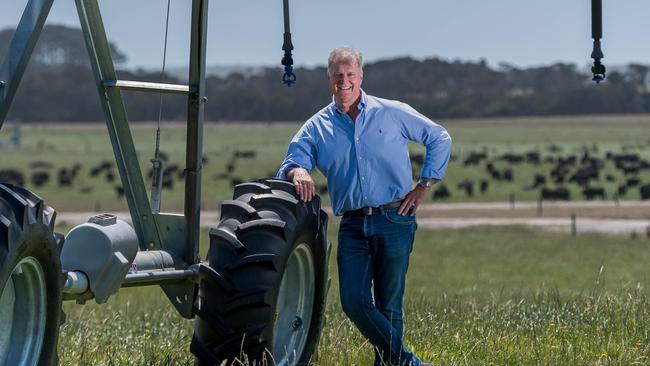
James and Madeleine Roberts-Thomson are standing under the impressive 14-span pivot irrigator on their Winton South farm on King Island, watching a herd of 700 heavy black steers systematically graze a strip of lush grass.
The tall brother and sister chat fluently about how many kilograms of dry matter per hectare are left in the irrigated paddock, and whether the intensively grazed herd should be moved to the next strip of grass today or tomorrow.
But nothing is left to chance. Eyeballing pastures and making decisions about when best to move grass-fed livestock based on gut feeling is not how TRT Pastoral run the business.
With large mobs of 900-1000 head of cattle, being grazed rotationally through paddocks every two to three months – and not returning for two to three months – to encourage maximum pasture regeneration as well as weight gain, James Roberts-Thomson says monitoring, measuring and gathering data is key. Staff – as well as Tim, James and Maddy – are trained in Grazing-For-Profit pasture principles, using sophisticated plate meter technology to measure pasture growth and density daily.

Typically a large cattle mob will enter a small electrically fenced strip of paddock when pasture cover density is measured at 2500-3000kg of dry matter per hectare, and be removed – often within 12 hours or a day – when they have eaten the grass density down to 1500kg DM/ha.
Even when the cattle are removed, the remaining grass is still 5-7cm long. This length has been shown to encourage maximum and speedy regeneration of both pasture and soil without any long-term damage to either.
“It’s all technology adopted from the dairy sector; beef producers can learn so much about maximum pasture growth and utilisation from dairy farmers, who have been intensively cell grazing for years,” James explains.
“It’s all about the grass. We now know a 400kg steer needs 10kg of green feed daily to put on a kilogram of weight a day; it’s now standard for us to measure and move cattle frequently.
“But dairy farmers have been doing it for years; they have been ahead of the beef industry on measurable agriculture, quick adoption of ag technology and using the data collected when milking to give instant production feedback.”
Tim Roberts-Thomson says while some of the King Island farms had been rotationally grazed under previous management, having a larger area to use as well as buying and developing 300 hectares of irrigated land fed by two dams has helped with growing out feeder steers in drier months.
But even he has been surprised about how much perfecting rotational grazing in smaller paddocks and strip-grazed cells has boosted production. At King Island he is moving towards having 9000 breeding cows, up from an original 7000.
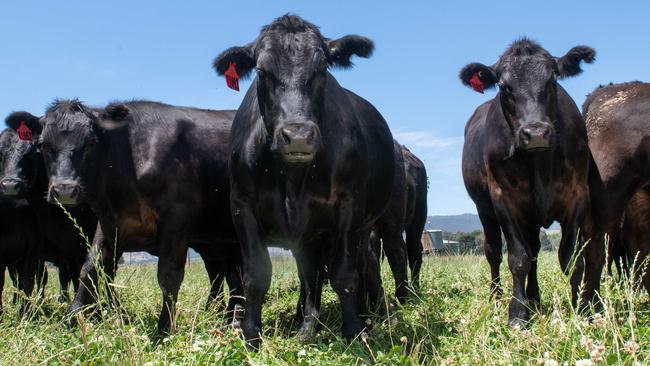

And on his Mansfield farms, known as the Howquadale Station aggregation, adopting the same tight rotational grazing system four years ago as on King Island using big herds and daily pasture metering has doubled the number of cows that can be run and maintained.
Madeleine Roberts-Thomson say that while the grazing is intense, the cattle mobs are only on the pastures for a very short time before they are moved on, leaving grass half-height and still growing strongly.
“We believe it’s nature’s way,” Maddy says, of their sustainable farming systems. “This rotational grazing system allows the grass to regenerate quicker and capture more carbon from the atmosphere because it is not eaten right down low. It’s better for the cattle, better for the environment, and then you get a better product.”
TRT Pastoral has now spent more than $200 million buying and building its southern Australian cattle operation. The next focus is on further optimising and improving the farms they own; with perhaps a few more purchases added in.

On King Island it’s all about maximising the use of the expensive recent investment in new irrigation pivots. Roberts-Thomson is also moving to develop his own Angus stud based at Mansfield, using Te Mania, Landfall and Lawson black Angus bloodlines, to supply his large King Island cow herd with the 300 new bulls needed every year to achieve constant genetic improvements.
“Over-arching everything we do, has to be about improving the beef and milk we produce per hectare. It’s all about improving the pasture, the water and the livestock. But with sustainability and animal welfare front of mind,” he says.
“I’ve never really had a grand plan; it’s been more been about when I see opportunities. As they come up, and if they make sense and fit into the overall vision, then I’ll try and take advantage of them.
“While the strategy now is about improving what we’ve already got, you never know what’s around the corner. We’ve now got 21 properties … and we’re not finished yet.”




